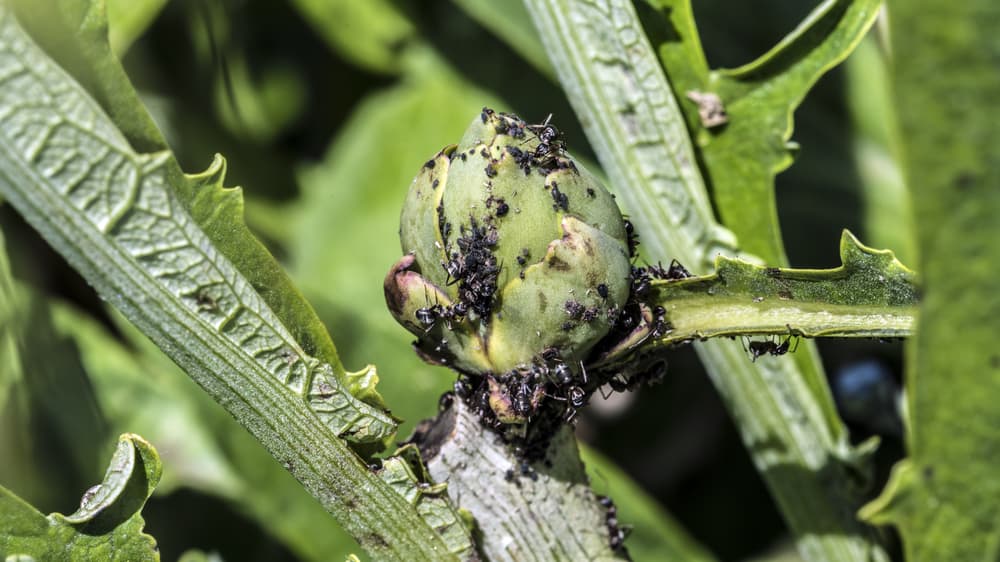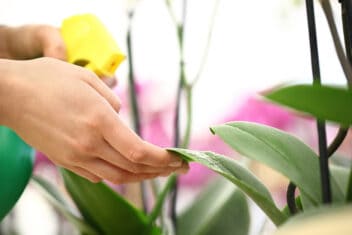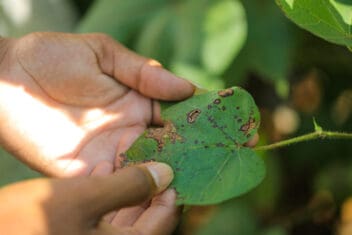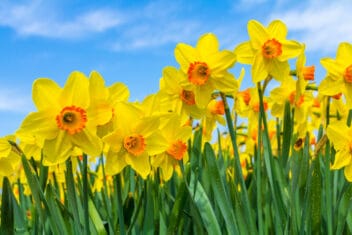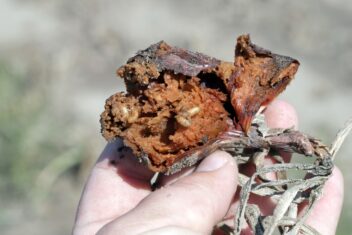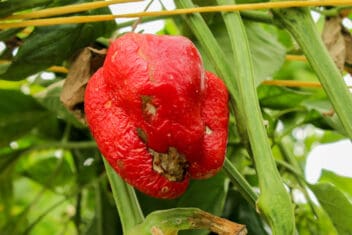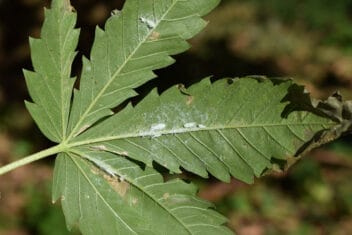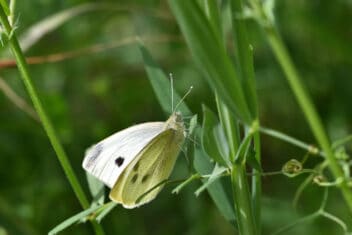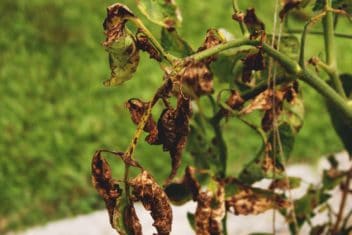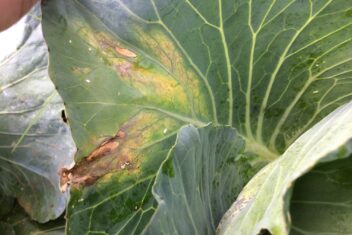Going by the look of artichoke plants, you would think that they suffer from few pests or diseases, as they look positively fearless with their thick skin and spikey growths. However, artichokes suffer from several issues, and we’ll discuss the most common here.
Fans of artichokes can’t wait for the season to be upon us, so it’s annoying when the plant isn’t in its peak condition.
If you love artichokes and you want to grow them as perfectly as possible, let’s discuss artichoke pests and diseases.
6 Artichoke Plant Diseases
Some diseases are no more than annoying; others will reduce the yield of the artichoke plant or affect the quality of the harvest. Do your best to avoid artichoke pests because they can spread many of these diseases.
Regardless, you want to watch for any of these symptoms because the more quickly you act, the better off your plants will be.
1. Artichoke Curly Dwarf Virus (ACDV)
This disease is one that affects the yield and quality of the harvest. The growth of the artichoke plant is severely affected, and it will struggle to survive.
The leaves will usually be distorted and have large necrotic spots, or entire sections of foliage will be affected.
Compared to a healthy artichoke plant, one with artichoke curly dwarf virus will have 40% less yield. Many, if not all, of the buds will become deformed, meaning they are useless. A bad case of this disease will cause the plant to die.
The virus may be spread by aphids or on nursery stock. Be especially careful if you divide and take plants from friends. Always check plants thoroughly for signs of disease before bringing them into your garden.
Keep your garden clean of debris, and keep weeds as clear as possible. ACDV can be found in milk thistle, so clear it away from your artichoke patch.
When artichokes have ACDV, they also have a tandem virus called artichoke latent virus that has no symptoms. If the disease badly affects your artichoke plants, remove and destroy them.
Keep artichoke pests like thrips and aphids away, because they can carry and spread ACDV.
2. Ramularia Leaf Spot
Not as serious as artichoke curly dwarf virus, Ramularia leaf spot’s telltale sign is the rapid drying up of the leaves as the disease progresses.
The fungal disease (Ramularia cynarae) starts with black spots on both the upper and lower sides of the foliage. As they spread and join, the leaf will dry up brown.
The white spores that spread the disease develop in the lesions. The spores are spread through water splash from either rain or overhead watering or by the wind.
The outer bracts (the outside leaves) turn brown and dry out before curling up. This gives the artichoke a sickly look, especially combined with slowed growth.
Although fungicides can be used for Ramularia leaf spots, they are more for commercial growers due to the frequency of application required and the strong chemical nature of the ingredients.
For the home gardener, prevention is key:
- Keep crops that also suffer from Ramularia leaf spot away, including strawberries, barley, beets, and rhubarb.
- Water the soil, not the plant foliage.
- Practice good crop rotation.
- Don’t allow the plant to become stressed, especially in drought conditions.
3. Bacterial Crown Rot
Bacterial crown rot is caused by the bacterium Erwinia chrysanthemi.
Both old and young leaves will wilt rapidly, especially when the temperature rises. With bacterial crown rot, a sign is usually dark coloration of the stem. The infected crown tissue will soften first, rot, and then collapse.
Reducing the spread of the pathogen is critical. Make sure you disinfect tools in between plants, especially if you have had bacterial crown rot in your garden.
Spray insecticide as artichoke aphids may spread the disease.
Remove infected plants immediately, implement crop rotation, and don’t replant artichokes in a home garden for another three years. If you grow your artichoke as a perennial, you might need to pull it and start over.
4. Botrytis Rot
Botrytis rot (Botrytis cinerea) can sneak in when rain, insects, frost, or garden tools damage an artichoke. The outside of the plants goes brown, while the inside of the wound has the common fuzzy mold of botrytis rot.
Botrytis rot is more common in wet weather. The fungus survives on infected debris, so ensure all debris and weeds are removed from around the artichoke.
You must also be careful when harvesting artichoke as damaging them can bring on the disease post-harvest.
You can treat the plant with a fungicide before the disease appears if you have this problem on other plants. Post-infection, the fungicides are ineffective.
Plant in full sun in soil with good drainage. Don’t water overhead.
5. Powdery Mildew
This is a widespread disease for many plants, including artichokes. The pathogens that cause it, Leveillula taurica and Erysiphe cichoracearum , need warm days and cool nights.
Moderate daytime temperatures around 68-86ºF are ideal for the disease. The spores love high humidity, so you may find that greenhouses in warm areas are a hotbed for it.
The foliage will go yellow, then brown, and then die. A white to dull gray growth forms on the leaves and proliferates. The inability of plants to photosynthesize creates low vigor and eventually death, all the while affecting the quality of the harvest.
Artichokes planted in low light or shady areas may see more instances of powdery mildew.
Plant artichokes where they get six to eight hours of sunlight a day, and where there is plenty of airflow.
Try this homemade recipe for powdery mildew. Mix one part milk with two parts of water and spray the artichoke. This spray won’t eliminate an infestation; just slow it down.
Use neem oil following the instructions on the package. Better yet, use it in addition to the above recipe.
Remove any infected plants if the infection is severe, or remove and burn infected foliage.
6. Verticillium Wilt
Verticillium wilt is a fungal disease caused by Verticillium dahliae that likes warm, wet weather. The disease enters the plant through the root system first and then works its way up the whole plant. As a result, the leaves are starved of water and nutrients.
When the artichoke starts bearing fruit, the leaves wilt more than expected in hot weather. You’ll also see the lower leaves turn brown, dry up, and die before dropping off.
The yield is severely affected, and the best thing to do is try and prevent the disease from occurring in the first place.
The sign most likely to lead you to the conclusion of verticillium wilt is everything above combined with misshapen, discolored, or dried buds. In severe cases, the plant will eventually collapse.
Avoid stressing plants as they’re more susceptible. Don’t transplant artichokes from areas where this disease has occurred.
Pests of Artichoke
Insects can be a double-whammy because they eat and damage the plant and can spread diseases. Here are the common artichoke pests to watch for:
7. Artichoke Plume Moth
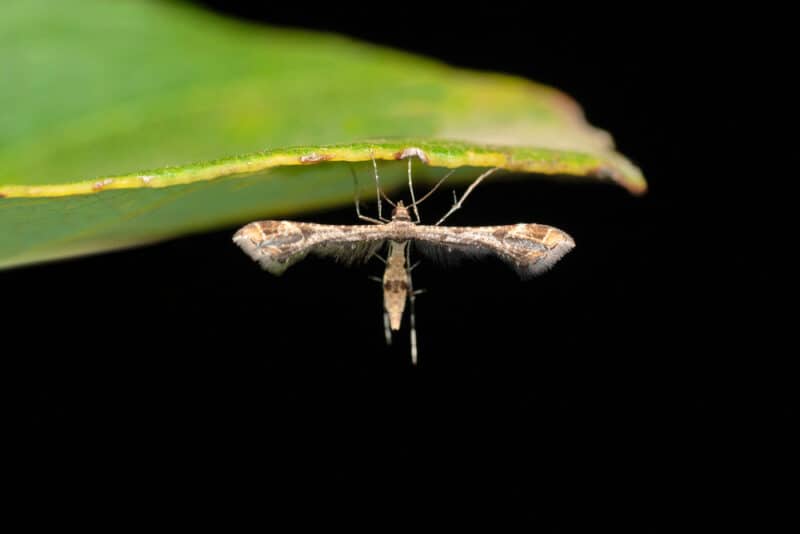
The plume moth (Platyptilia carduidactyla) is one of the artichoke pests that only appear in areas where artichokes are grown as perennials. The larvae feed on any part of the plant and cause particular problems when they feed on the floral buds.
The adult female lays her eggs on the undersides of the leaves. When the larvae first appear, they feed on external parts of the plant before burrowing in and eating the inside of the leaf stalk, moving their way toward the center of the buds.
The plume moth will pupate on debris and prefers dried leaves that have curled up. An adult appears, and the cycle begins again up to three or four times a year.
Use pheromone traps to see if they’re present. Be sure to buy a lure that targets explicitly this moth. The more moths you catch, the more quickly you need to act.
Check leaves regularly for eggs and larvae, though they are quite hard to see. If any artichoke buds are infected (or you suspect they are), remove them and destroy them in a fire or throw them in the garbage.
You need to use caution when choosing a treatment option. A broad-spectrum insecticide can kill beneficial insects, as well as artichoke pests, and end up causing more harm than good in the long run.
A product containing Bacillus thuringiensis is an effective control method that doesn’t harm good bugs. Beneficial nematodes are also effective at killing the larvae.
8. Cutworms
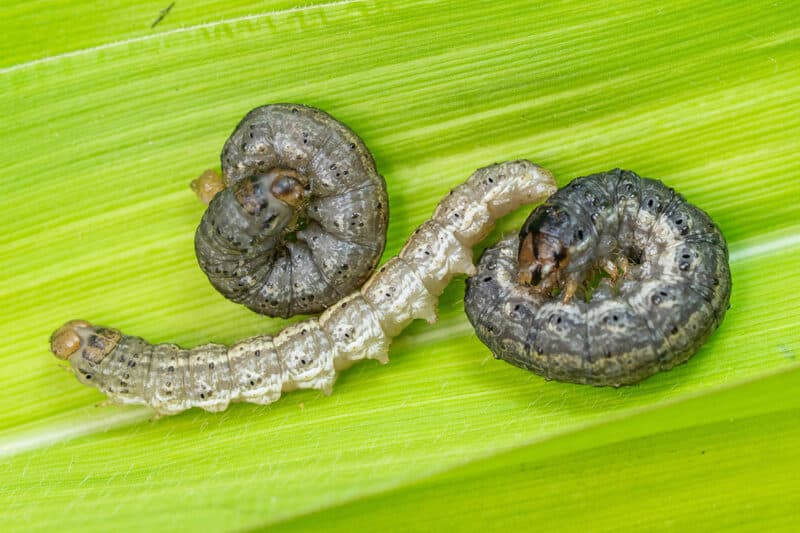
Cutworms (Agrotis ipsilon and Peridroma saucia) eat a lot and can do a lot of damage to the artichoke plant. The worst damage happens when they chew through the entire base of the young plants, cutting them down.
Cutworms are camouflaged by the soil and grow to around two inches long. The eggs overwinter on grasses.
If you see a young plant cut off at the base, look around in the dirt, and you will likely see the cutworm. If you disturb them, they’ll curl into a “C” shape.
Make homemade collars from paper towel tubes, cans, or plastic bottles. Push the collar into the soil and leave at least three inches above ground to prevent access to the stem of the young plant.
Other than collars, the best defense is diatomaceous earth or Bacillius thuringiensis.
9. Aphids
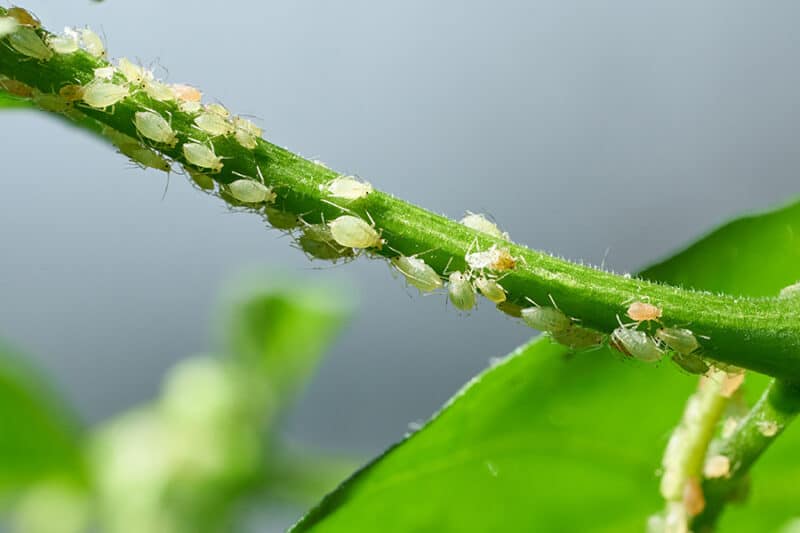
Aphids are super common on all kinds of plants. On artichokes, they cause yellow stippling on the leaves and stunted growth if there are enough of them. Check out our aphid guide to determine what to do about these common artichoke pests.
10. Thrips
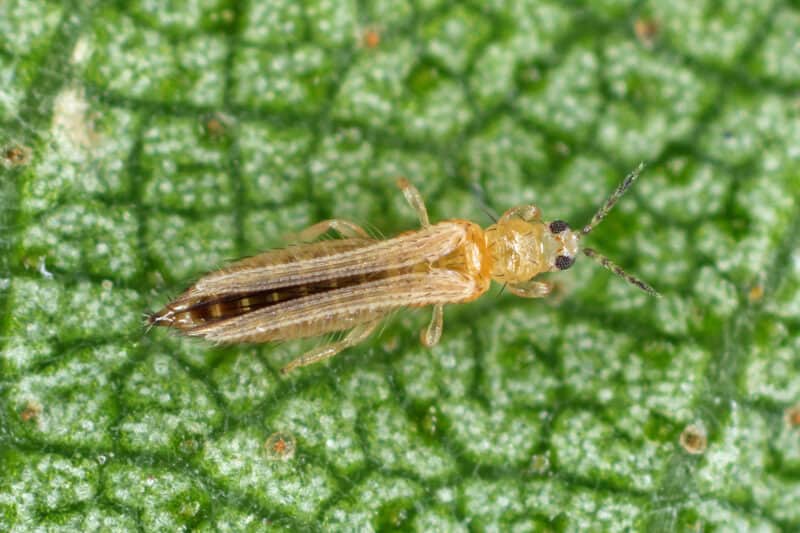
Thrips are less common than aphids but more damaging. They can spread terrible diseases, and they can stunt or outride kill a small plant. Our guide to thrips can help you identify and eliminate them from your garden.
11. Leafhoppers
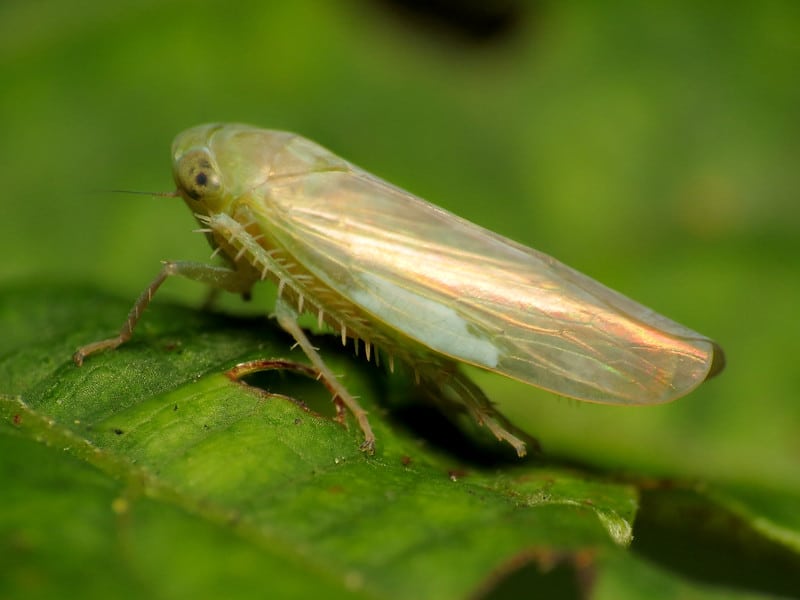
Leafhoppers are sapsuckers that exist pretty much everywhere in the world. They inject a toxic saliva into the leaf, causing white and yellow stippling that reduces photosynthesis. The infected leaves may turn brown and drop from the plant.
Learn how to control leafhoppers in our guide.
12. Armyworms
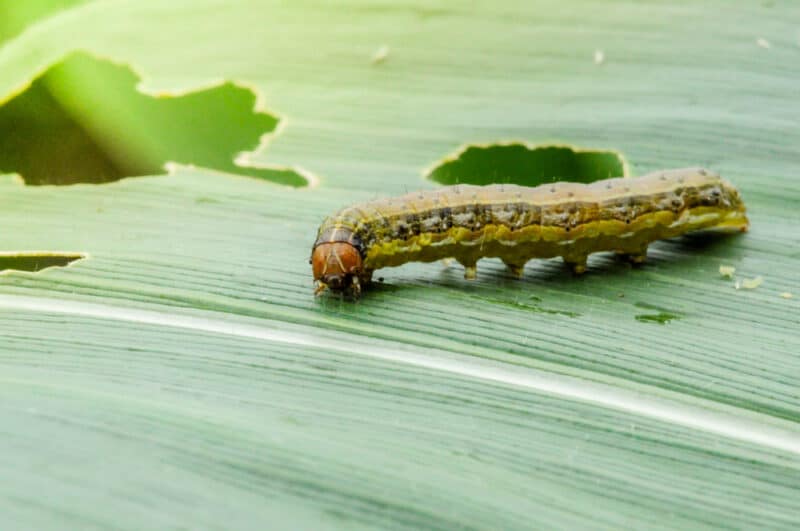
Armyworms can devour young plants in a single night. One minute you have a happy artichoke going, and the next, it’s worm food. When it comes to artichoke pests, these worms can be extremely frustrating.
Our guide will help you stop them from killing your plants.
13. Flea Beetles
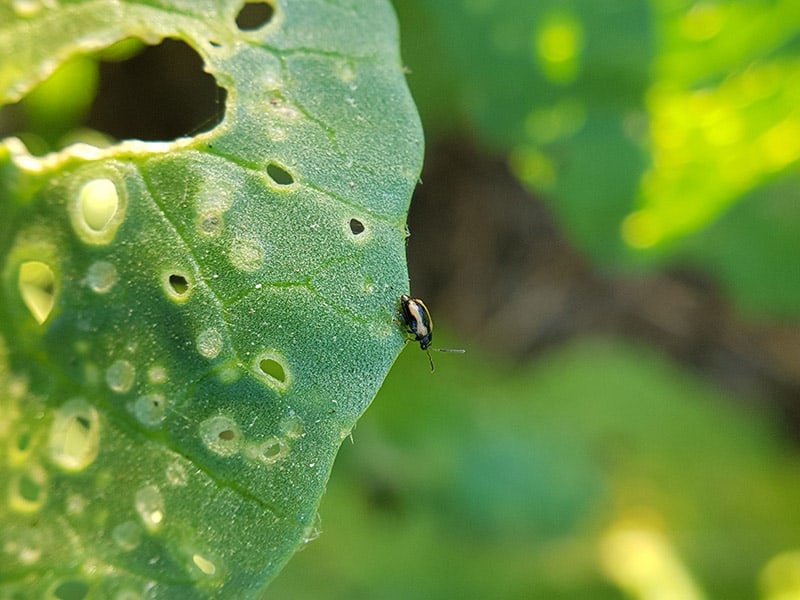
Flea beetles feed on foliage and leave lots of little shotholes behind. These reduce the plant’s vigor and leave it open to disease invaders. Our guide to flea beetles will give you the tools you need to stop these artichoke pests.
